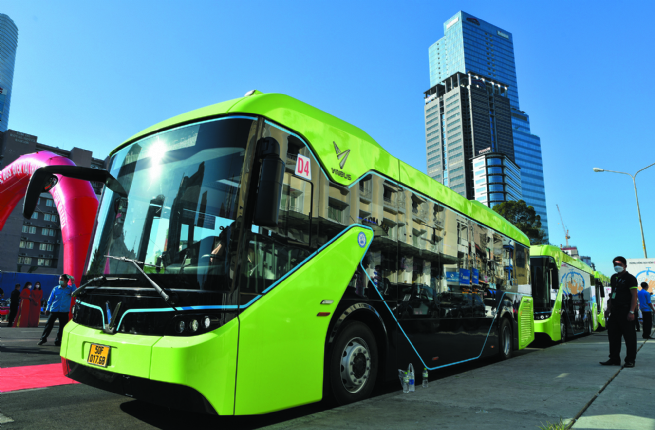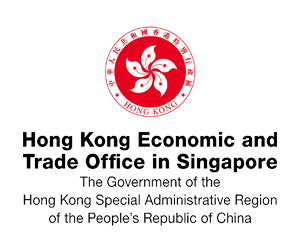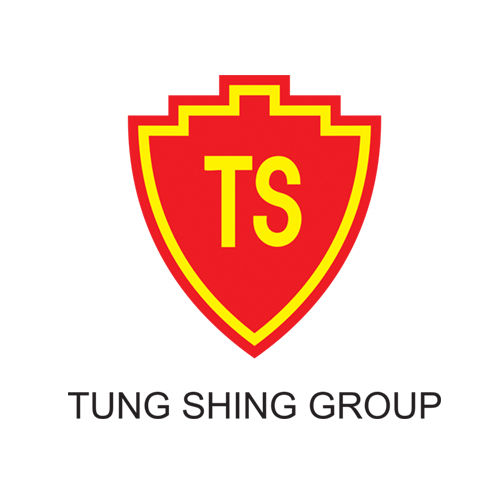Want to be in the loop?
subscribe to
our notification
Business News
ECONOMIC GROWTH AND GREEN ENERGY FROM VIETNAM’S EV TRANSITION
Vietnam aims to fully decarbonize its economy by 2050. Following the Prime Minister of Vietnam's commitment to net-zero emissions at the United Nations Climate Change Conference in Glasgow in November 2021 (COP26), the country has developed and begun implementing plans to reduce carbon emissions in the transportation sector.

The EV transition is expected to create up to 6.5 million new jobs across the EV value chain by 2050
Reducing greenhouse gas emissions
Energy is the largest source of greenhouse gas emissions, with transportation being a significant contributor to this rise. Without decarbonization, this share will continue to grow due to the rapid increase in car usage. A World Bank report on Vietnam's transition to electric vehicles highlights that the transportation sector emitted approximately 32.9 million tons of carbon dioxide equivalent (MtCO2eq) in 2021, making up 7.2% of the country's total greenhouse gas emissions, with road transport as the primary contributor. While car ownership remains a luxury for most Vietnamese, the growing middle class has fueled an average annual car sales growth of 15% from 2010 to 2022 - one of the highest rates in the region. This surge in vehicle demand presents Vietnam with a prime opportunity to transition directly from traditional vehicles to electric vehicles (EVs).
Vietnam's transition to EVs must also include the shift to electric two-wheelers, as they will remain the dominant mode of transport until at least 2035. In 2022, two-wheeler registrations reached 72.16 million, accounting for 94% of all registered vehicles. This translates to a motorized vehicle usage rate of 518 two-wheelers per 1,000 people, far exceeding the car usage rate of just 22 cars per 1,000 people. The adoption of electric two-wheelers is expected to drive the country's EV transition, a trend that has been gaining momentum since 2014.
Economic development opportunities
The shift to EVs offers economic opportunities. To achieve the EV adoption goals, Vietnam's vehicle sales need to grow from 500,000 units in 2022 to around 1.5 million by 2030 and 7.3 million by 2050. Cumulatively, this indicates a market demand of over 7 million EVs during 2024–2030 and 71 million EVs during 2031–2050. The development of the EV market is expected to boost the entire EV value chain, including vehicle manufacturing, battery production and charging infrastructure. Demand in areas like EV maintenance and recycling will also rise, creating opportunities for skilled labor. The EV transition is projected to generate up to 6.5 million new jobs across the EV value chain by 2050, with 61% in the EV charging infrastructure sector.
Infrastructure preparedness
Decision 876/QD-TTg on green transformation in road transportation has set targets for transitioning to electric-powered vehicles, including aiming for 50% of urban transportation vehicles and 100% of inner-city buses and taxis to use electric or green energy by 2030, and 100% adoption for all road vehicles by 2050.
To accelerate EV adoption, the World Bank recommended that Vietnam establish an inter-ministerial government agency to oversee electric transportation across the EV ecosystem during the transition period. Encouragement of EV adoption requires addressing existing issues while creating future incentives, including through the development of charging infrastructure.
Particularly, Vietnam needs to prepare its power sector to handle the impact of EV charging demand by integrating forecast impacts into updates for power development planning, increasing investment in power generation, and expanding the capacity of transmission and distribution grids. Additionally, smart charging should be promoted through differential electricity pricing, installation of smart charging stations for off-peak charging, and development of rooftop solar power beyond the electricity meter at public charging stations.
Importantly, Vietnam must encourage modal shifts in transportation demand, transitioning from personal vehicle use to public passenger transport, from interprovincial commercial passenger vehicles to rail, and from trucks to rail and waterways for interprovincial freight transport.
Source: VCCI
Related News

GOLDEN DEAL, KNOCK-DOWN OFFER
Are you ready for a fun-filled family vacation. Don't miss the super attractive Family Staycation package at Becamex Hotel. 2 days 1 night package with full amenities and free activities: Buffet breakfast, Swimming, tennis, bicycle, gym, sauna, cool ice cream, 300.000 VND service voucher and many other offers! Contact now for detailed advice.

"BEARY CHRISTMAS" CHARITY PROGRAM
As the Festive Season approaches, Caravelle Saigon, in collaboration with VinaCapital Foundation (VCF), is bringing a heartwarming charitable initiative to life — and we are delighted to invite all HKBAV members to take part in the very first “Beary Christmas” Charity Program. By adopting a Caravelle Bear for VND 299,000 nett, you will be directly supporting children battling cancer in Vietnam through VCF’s Can-Care/Can-Clover Program.

SOILBUILD INTERNATIONAL WINS “BEST INDUSTRIAL DEVELOPMENT” AWARD FOR SPECTRUM NGHE AN AT THE PROPERTYGURU VIETNAM PROPERTY AWARDS 2025
Soilbuild International is pleased to announce that its project, Spectrum Nghe An, has been awarded Best Industrial Development at the PropertyGuru Vietnam Property Awards 2025, held on 24th of October 2025, in Ho Chi Minh City. The PropertyGuru Vietnam Property Awards is part of the prestigious PropertyGuru Asia Property Awards series, the largest and most respected real estate awards programme in Asia.

WEBINAR: 2025 VIETNAM KEY TAX FINALISATION, UPDATES ON TAX CHANGES AND GLOBAL MINIMUM TAX
Dear Valued Client,We would like to invite you to our webinars on Friday, 12 December 2025, and Tuesday, 16 December 2025, to review and learn about key 2025 tax finalisation topics and stay ahead with the latest tax changes.

NEW ECONOMIC POLICIES EFFECTIVE THIS DECEMBER
Government Decree 304/2025, effective December 1, sets stricter conditions for seizing collateral, especially assets that are a borrower’s sole residence or essential work tools. In such cases, lenders must set aside a compensation amount equivalent to six to twelve months of minimum wage. The measure aims to improve transparency in bad debt handling and reduce credit risk in the banking system.

QUANG NINH TARGETS VND58 TRILLION IN TOURISM REVENUE
Quang Ninh Province is aiming to generate VND58 trillion in tourism revenue this year after surpassing its goal of 21 million visitors, driven by new tourism products, expanded nighttime activities, and large-scale events. As of mid-November 2025, Quang Ninh had welcomed 21.28 million visitors, up 12% year-on-year. Tourism revenue reached at least VND57 trillion, a 22.46% increase from the same period last year. With its visitor target achieved, the province is now pushing toward its revenue goal of VND58 trillion.
























